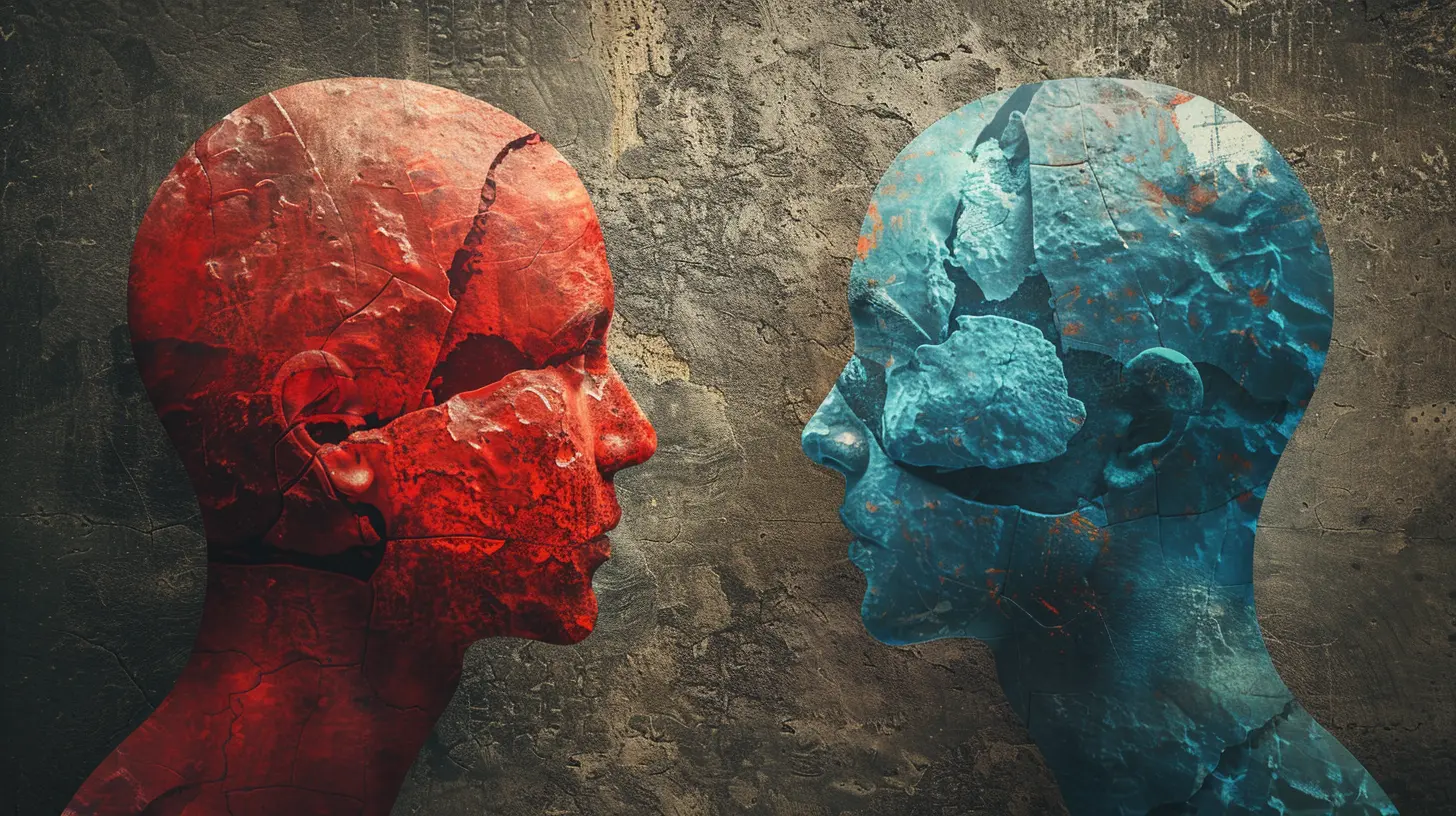Attachment Theory and Emotional Intelligence: A Powerful Combination
24 September 2025
If you’ve ever been in a relationship—friendship or romantic—you’ve probably asked yourself why you behave the way you do. Maybe you’ve noticed yourself pulling away when things get too real, or maybe you overanalyze every word in a text message from your partner. Believe it or not, it’s not just you “being emotional.” These patterns often have deep roots in your early life experiences and the kind of emotional intelligence you’ve developed along the way.
Let’s dive into two powerful psychological concepts that shape the way we connect: Attachment Theory and Emotional Intelligence (EQ). When they come together, something truly transformational happens. This duo can help you form healthier connections, understand yourself better, and level up your emotional resilience.

What Is Attachment Theory, Anyway?
First things first—what is Attachment Theory?In simple terms, attachment theory explains how we form emotional bonds with others, especially in close relationships. It all starts in infancy. British psychologist John Bowlby, the pioneer of this theory, believed that the bonds we form with our caregivers affect our ability to form attachments throughout life.
Imagine this: Your caregiver was your first mirror to the world. If you cried and someone came to comfort you, you learned that the world (and people in it) were safe. If your needs were ignored or inconsistently met, your brain filed that under “relationships are unpredictable” or even “relationships are scary.”
The Four Main Attachment Styles
There are four main attachment styles, and understanding which one you lean toward is like getting the cheat code to your emotional life.1. Secure Attachment
You’re comfortable with intimacy and independence. You trust people and feel comfortable depending on them when needed.
2. Anxious Attachment
You’re likely to crave closeness and fear abandonment. You might overanalyze texts or feel like you're "too much."
3. Avoidant Attachment
You value independence so much that emotional closeness feels overwhelming. Vulnerability? Nope, not your thing.
4. Fearful-Avoidant (Disorganized) Attachment
The trickiest one. You crave closeness but fear it at the same time. It’s like getting emotionally seasick—constantly pulled in two directions.

Emotional Intelligence: Your Inner Compass
Now that we’ve unpacked attachment styles, let’s talk about emotional intelligence.Simply put, emotional intelligence (EQ) is your ability to understand, manage, and express your emotions—and to tune into the emotions of others. It’s like having a user manual for life’s emotional roller coasters.
There are five key components of EQ, according to psychologist Daniel Goleman:
1. Self-awareness – Knowing what you’re feeling, and why.
2. Self-regulation – Managing your emotions in healthy ways.
3. Motivation – Staying driven, especially through challenges.
4. Empathy – Sensing others' feelings and perspectives.
5. Social Skills – Navigating social situations smoothly.
Think of EQ as your emotional toolkit. It helps you read the room, handle conflict like a pro, and show up authentically in your connections.

So, How Do These Two Interact?
Here’s where it gets juicy.Attachment theory and emotional intelligence aren’t just separate psychological frameworks. They dance together—sometimes gracefully, sometimes with a few missteps—but always in sync.
Your attachment style influences your emotional responses and how you interact with others. Emotional intelligence, on the other hand, helps you recognize those patterns and change them if they’re not serving you.
Securely Attached? EQ Comes Naturally
People with a secure attachment style usually have a head start when it comes to emotional intelligence. Growing up in a consistent, nurturing environment teaches you that it’s safe to feel, express, and share emotions.You’re more likely to be:
- Honest about your feelings
- Comfortable with emotional intimacy
- Empathetic and responsive to others
This doesn’t mean life’s always smooth sailing, but your emotional GPS is set in a healthy direction.
Insecure Attachment = Emotional Blind Spots
If your attachment style is anxious, avoidant, or fearful-avoidant, you might struggle more with emotional regulation and awareness. Here’s how each style might affect your EQ:- Anxious Attachment: You may be highly empathetic but lack self-regulation. You feel things deeply but might get overwhelmed easily.
- Avoidant Attachment: You might excel at keeping calm on the surface but struggle with empathy or emotional expression. You bottle things up.
- Fearful-Avoidant: You could be caught in a tug-of-war between wanting to connect and fearing the messiness of emotions, leading to emotional overload or shutdowns.
Sound familiar? The good news—it’s not a life sentence. Emotional intelligence can actually reshape attachment patterns over time.

Rewiring Your Attachment Through Emotional Intelligence
Here’s where the magic happens. With practice, you can develop your emotional intelligence and shift toward a more secure attachment style—even if life didn’t start out that way.Let’s break it down.
Step 1: Build Self-Awareness
Start by identifying your default emotional responses. Do you withdraw when conflict arises? Do you seek constant reassurance?Ask yourself:
- “What am I really feeling right now?”
- “Where might this reaction be coming from?”
- “Is this fear, sadness, shame, or something else?”
Journaling, therapy, and even voice notes (yes, talking to yourself out loud really helps!) can build that inner awareness.
Step 2: Practice Self-Regulation
Once you’re aware of your emotional triggers, you can respond rather than react.Easy strategies:
- Deep breathing (yep, it’s a cliché for a reason)
- Taking space before reacting
- Replacing negative self-talk with compassionate affirmations
Think of it like emotional weightlifting—the more you practice, the stronger your regulation muscles become.
Step 3: Strengthen Your Empathy
Empathy bridges the gap between your world and someone else’s. Try this:- Listen without interrupting.
- Imagine how the other person feels.
- Validate their experience, even if you disagree.
A simple “That must’ve been tough for you” goes a long way. It's not about fixing—it’s about feeling with.
Step 4: Rebuild Connection with Others
With increased EQ and self-awareness, you can work toward more secure attachments. This might involve:- Setting healthy boundaries
- Communicating your needs
- Choosing relationships that feel emotionally safe
Remember, you’re not trying to become perfect. You’re trying to become more you—with a little less fear and a lot more love.
Why This Combo Matters in Daily Life
So why should you care about attachment theory and emotional intelligence working together? Because this combo is literally life-changing.Here’s what becomes possible:
Better Relationships
When you understand how your attachment style impacts your behavior, you stop blaming others for your emotional highs and lows. Add EQ into the mix, and you can navigate relationship conflicts, express your needs clearly, and connect more deeply.Less Anxiety, More Resilience
An insecure attachment can make life feel like walking a tightrope. Developing emotional intelligence helps you feel more grounded, no longer ruled by old emotional scripts.Improved Communication
You’ll start to notice when you're projecting your fears or shutting down emotionally. You learn to speak from a place of clarity, not chaos.Stronger Sense of Self
Knowing where your feelings come from—and being able to regulate them—builds confidence. You stop defining yourself by how others treat you.
It’s a Journey, Not a Destination
Let me be honest with you. Healing attachment wounds and growing your EQ doesn't happen overnight. It’s not like getting a new phone—push a button and boom, you’re secure and emotionally wise.It’s more like tending a garden. Some seasons are fruitful, others feel like you’re digging through dirt. But with consistency, self-compassion, and a willingness to keep showing up, growth is inevitable.
Final Thoughts: Your Story Isn't Set in Stone
You are not your attachment style. It’s just a blueprint. And emotional intelligence is the toolkit you use to revise that blueprint, bit by bit.So whether you're someone who's terrified of vulnerability or someone who clings to anyone who offers affection—there’s hope. When you combine the deep insights of attachment theory with the transformative power of emotional intelligence, you become more than just emotionally “aware”—you become emotionally free.
And isn't that what we all want at the end of the day?
To love safely.
To be fully seen.
To let go of old survival modes that no longer serve us.
That’s the power of this incredible combination.
all images in this post were generated using AI tools
Category:
Attachment TheoryAuthor:

Paulina Sanders
Discussion
rate this article
1 comments
Reina McCord
Thank you for this insightful article! The connection between attachment theory and emotional intelligence is fascinating and essential for personal development and healthier relationships.
October 18, 2025 at 4:09 PM

Paulina Sanders
Thank you for your kind words! I'm glad you found the connection between attachment theory and emotional intelligence valuable for personal growth and relationships.


